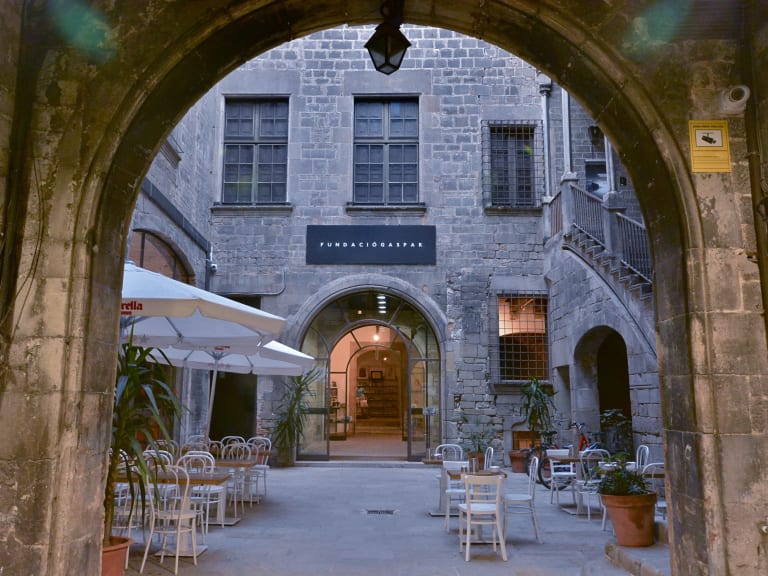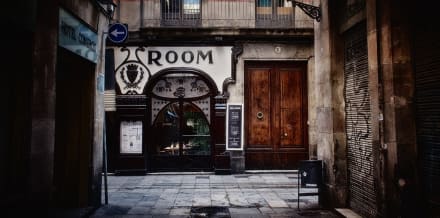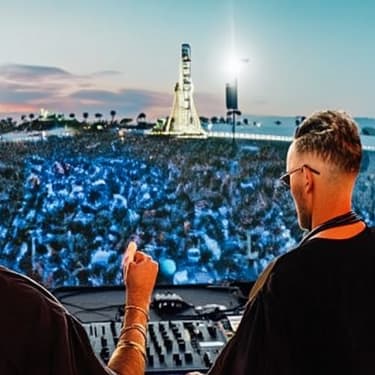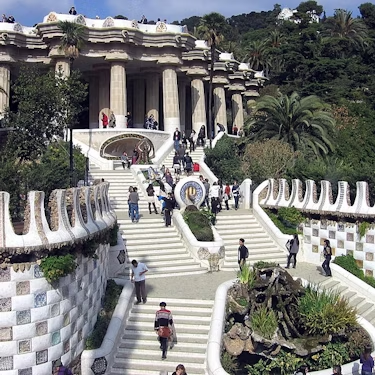More about: 6 Best Barcelona Gothic Quarter Tours
The Gothic Quarter is the original core of the Catalan capital. Its origins date back to the time of Barcino, the Roman colony built during the reign of Emperor Augustus. The medieval architecture and narrow streets form an urban fabric that has witnessed thousands of historical events.
Among Barcelona's many attractions, the Gothic Quarter deserves a special mention. Not every city offers such a striking contrast between medieval architecture and contemporary bars and shops.
1. Tour of stories and legends of the Gothic Quarter

Walking through the Gothic Quarter is like taking a trip back in time. Its buildings and stone-paved streets form a veritable labyrinth, and only a local guide can reveal the secrets hidden behind each wall. There are different tours available, and in most cases they include the following stops:
- Plaça Nova, the heart of Roman Barcelona. This space preserves some buildings from that period - two towers and the remains of an aqueduct - as well as the Casa de l'Ardiaca, the former residence of the ecclesiastical hierarchy. A few metres further on stands the Cathedral of Santa Eulàlia. During Christmas, this urban space hosts a traditional Christmas market.
- Basilica of Santa Maria del Mar, the jewel of Catalan Gothic architecture. It was built in the 14th century, the golden age of the Crown of Aragon. It is "The Cathedral of the Sea" described by Ildefonso Falcones.
- Plaça del Rei, a charming spot. It was the centre of power in the Middle Ages and its main attraction is the Palau Reial Major, the old residence of the Catalan counts.
- Carrer de Montcada, the main thoroughfare in the Middle Ages. Here you will find the Picasso Museum, an art collection housed in the evocative Aguilar Palace.
- Plaça de Sant Just i Pastor and its church of the same name, the oldest in the city
Normally, to liven up the tour, a stop at a bar is included. The price of the experience includes a snack and a drink (beer, glass of wine or soft drink). Everything else is at your own expense.
- Duration: between 2 and 3 hours
- Cost: between €20 and €30
2. Ghost tour in the old town

Are you travelling to the Catalan capital on Halloween? Then you can round off your visit with a ghost tour. Like other cities in Spain, Barcelona is also home to lost souls, and some claim that the Devil himself has walked its streets.
The tour takes in various parts of the city, including the Gothic Quarter, and is perfect for discovering a different side to local history. In some cases, these experiences are inspired by "Fantasmas de Barcelona" (Ghosts of Barcelona), a book by journalist Sylvia Lagarda Mata. In other cases, the route is designed as a series of riddles that make the tour even more entertaining.
To solve the mysteries and continue on the route, all you need is your smartphone. You don't even need an internet connection, as the riddles can also be solved offline.
- Duration: between 1 and 2 hours
- Cost: between €5 and €10
3. Tapas tour of the Gothic Quarter

This medieval neighbourhood is home to some of the best wine cellars in the city. Carrer de la Mercè, a street that runs parallel to Passeig de Colom, is a traditional destination, but it is not the only one. This area is a labyrinth of narrow streets that hide quality bars and restaurants.
To explore Barcelona's Gothic Quarter, it is best to book a guided tour. There are several options that cover the Gothic Quarter and stop at four or five establishments. In addition to the food, at each stop you can enjoy a beer or a glass of wine, vermouth or cava.
These experiences take place both in the evening and at midday and give you the opportunity to try fish, cold meats, padrón peppers and la bomba, Barcelona's most famous tapa. This is a potato croquette stuffed with meat that will win you over with its crispy texture on the outside and juicy inside.
- Duration: approximately 3 hours
- Cost: between €80 and €120
4. Tour of El Call, the old Jewish quarter

In the Middle Ages, Barcelona was home to the largest and most prosperous Jewish community in Spain. In Catalonia, Jewish quarters were called "Calls," and the one in the capital was located in the heart of the Gothic Quarter. Today, it would be framed by the streets of Banys Nous, Sant Sever, Bisbe and Call and the surroundings of the Church of Sant Jaume.
The guide will tell you about the history of the neighbourhood and the people who lived here until 1492, when the Catholic Monarchs expelled the Jews from all their possessions. Their traces survive to this day, the main one being the Great Synagogue. It stands on the foundations of a Roman building and is one of the oldest in Europe.
These tours usually include admission to the Museu D'historia de Barcelona de El Call. It was inaugurated in 2015 with the aim of teaching about the life of the Jewish community during the Middle Ages.
- Duration: between 1 and 2 hours
- Cost: approximately €50
5. Photo Experience in Barcelona

Barcelona is wonderful and has some charming corners. La Boqueria Market, the Tibidabo Ferris wheel and Park Güell are a magnet for cameras, but there are "Instagrammable" places all over the city, including the Gothic Quarter.
This tour will take you to the most evocative spots in medieval Barcelona. Here's a taste of some of the most beautiful corners:
- Carrer del Bisbe, a pedestrian alleyway connecting Plaça Sant Jaume and the Cathedral. Its main attraction is the Pont del Bisbe, an elevated footbridge reminiscent of Venice's Bridge of Sighs. Despite its Gothic style, it was built in the 1920s.
- Palau de Lloctinent, the former residence of the viceroys (at least in the initial plans). In fact, it is known for having been the headquarters of the Inquisition in Barcelona.
- Carrer de la Pietat, where time seems to have stood still. It runs behind the Cathedral and when you look up you will see gargoyles and colourful rose windows.
You will be accompanied at all times by an expert photographer who will help you take the perfect shots. Please note that these tours do not take place exclusively in the Gothic Quarter; they usually also cover El Born, Vila Olímpica and Eixample.
- Duration: between 1 and 2 hours
- Cost: between €50 and €60
6. Tour of the Gothic Quarter with admission to the Picasso Museum

This option combines a guided tour of the neighbourhood with admission to the museum dedicated to the Malaga-born painter. In the first part, the route takes in the district's most outstanding monuments: the Gothic churches of Santa María del Pi and Santa María del Mar, Carrer Montcada and its palaces, the Cathedral and the Palau de la Música Catalana, the modernist auditorium designed by Barcelona architect Lluís Domènech i Montaner.
In the second part, you will visit the Picasso Museum, one of the best in the city.
The painter lived in Barcelona in his younger years and many works from this period remain in the city. Among the most notable are "El Diván", "Hombre con Boina" and "El abrazo".
- Duration: between 3 and 4 hours
- Cost: between €150 and €200
Where to eat in Barcelona's Gothic Quarter?

After a long walk, you'll need to recharge your batteries. Luckily, this part of the city is home to countless bars and restaurants specialising in both local and international cuisine. For a break, I recommend the following establishments:
- Antic Teatre, a cultural centre that hides one of the most evocative terraces in the whole city (Carrer Verdaguer i Callís 12)
- Can Cullerets, a traditional restaurant between Las Ramblas and the Church of San Jaime. It is said to be the oldest in Barcelona. Be aware that it is only open for dinner from Thursday to Sunday (Carrer Quintana 5)
- Arcano, an establishment specialising in market cuisine. If you are travelling with your partner, this is a sure bet: it is housed in a former 17th-century stable and serves delicious desserts (Carrer dels Mercaders 10)
- La Plata, another traditional option just a stone's throw from Passeig de Colom. (Carrer de la Mercè 28)
- Bistrot Levante, a Mediterranean restaurant with a nod to Middle Eastern cuisine. Its recipes are both tasty and healthy (Placeta de Manuel Ribé 1).














